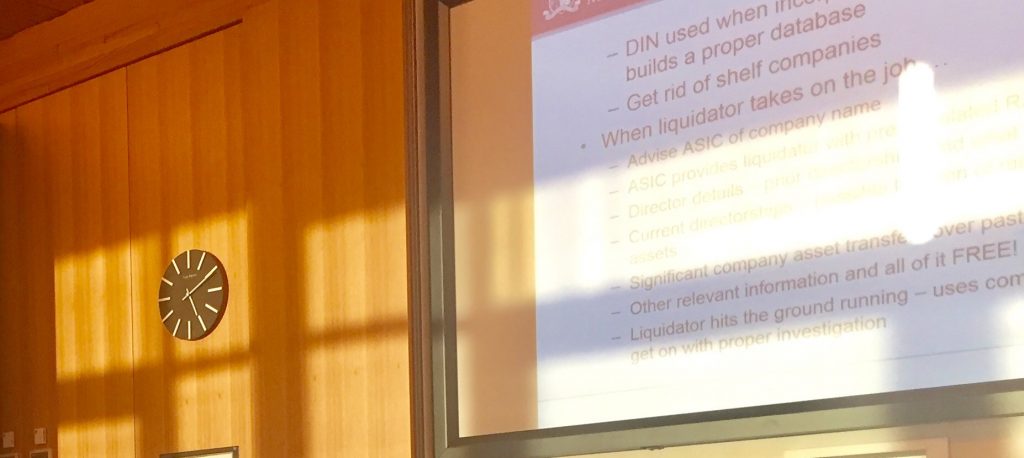In the 2018-19 Budget, the Australian government announced that it would modernise the Australian Business Register (ABR) and the ASIC business registers on a platform to be administered by the Australian Business Registrar within the ATO.
One aspect of that is the implementation of a Director Identity Number, DIN, on which the Treasury is asking for views.
Principles
The DIN would require all directors to confirm their identity. It would be a unique identifier for each person who consents to act as a company director. The person would keep that unique identifier for life, even if their directorship with a particular company changes.
The identifier would be in the nature of any membership or registration number. It would allow the director, and others, to be able to trace the director’s relationships across companies and interface with other government agencies and databases. This would allow directors to be able to map their relationships with other entities and individuals. Directors would not be able to make a mistake with their name, all that is needed is the correct number.
From the perspective of others, this would ensure that directors of companies that enter insolvency administration can be clearly identified and traced, in particular if there is repeated unlawful activity including illegal phoenix activity.
Some directors forget other companies in which they have been involved; this would assist them to remember.
Design considerations
Various questions are asked – what level of identity verification should be required to obtain a DIN? Is it appropriate to use a digital identity to verify the identity of the company director? If not digital, what other identity verification means should be used and why?
Ensuring that all directors consent to their role as a company director will be an important part of forming a company and maintaining its registration. The government asks what is the most appropriate and efficient manner of gaining a director’s consent before issuing a DIN?
Should the law allow authorised agents to apply for a DIN on behalf of their client? If so, how does this fit in the consent framework?
What DIN related data should be made publicly and privately available (that is, only available to regulators)? Does the provision of a DIN remove the need to make director and other company officer address data publicly available? What privacy and security concerns are there around the public availability of the DIN?
All of these issues are mere detail in the scheme of implementing the DIN.
New Zealand
Treasury consultation with New Zealand may assist. Its Consultation on Whether to Introduce a Director Identification Number Discussion Paper, of May 2017, refers to Australia’s moves to adopt a DIN. It sets out the design considerations in detail. It has not yet announced its reforms.
One major difference with NZ is that it offers free access to its company database. The issue of high ASIC fees is not raised by Treasury in its paper.
Comments on the DIN and Australian Treasury’s other proposals are open until 17 August 2018.
There are many references to the need for a DIN on this site going back some time. See for example Director identity numbers, and their frequent flyer equivalents. Professor Helen Anderson was the DIN’s originator.



